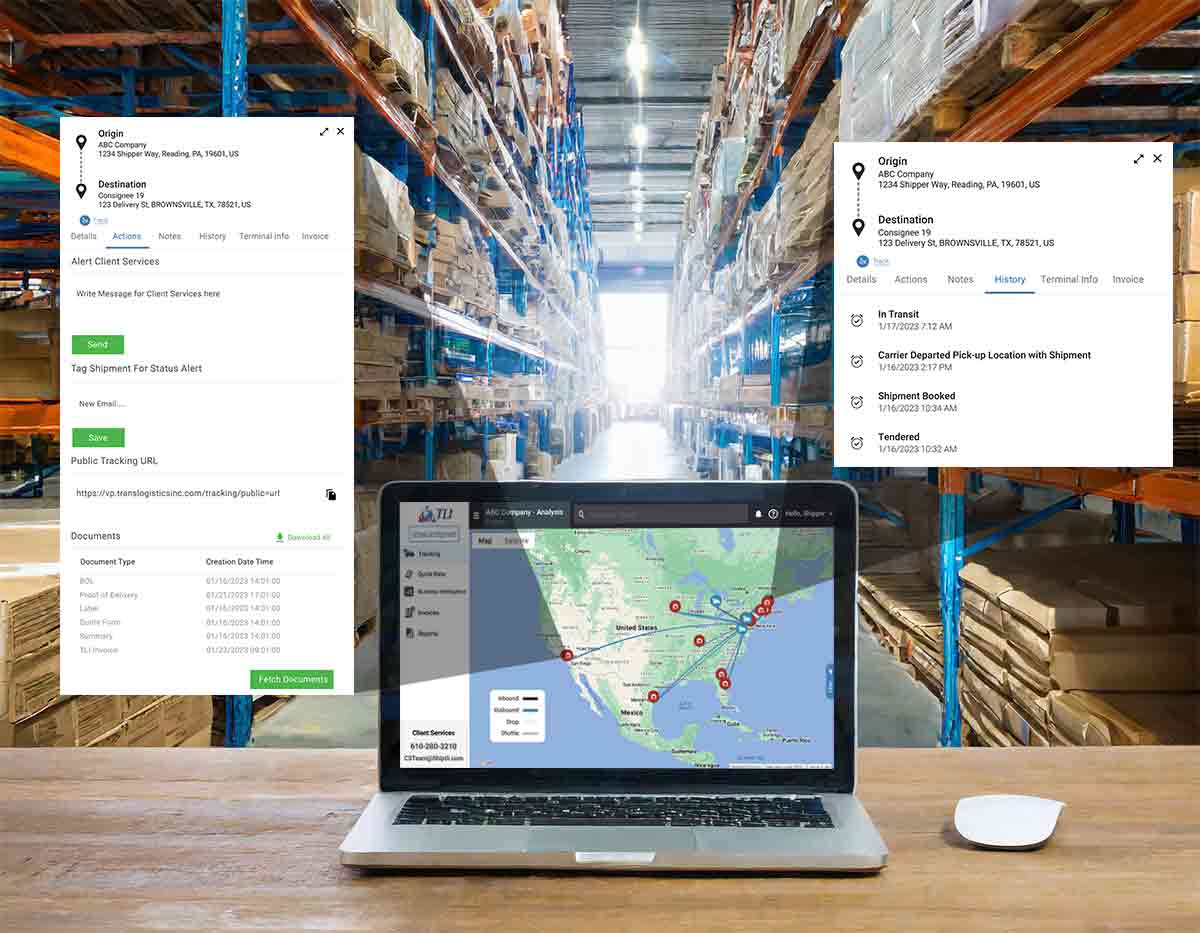
Learn how and why a shipper should track their freight shipments. If you are looking for tracking on a specific shipment through TLI, you can log into viewpoint or contact our team.
Why Do I need to Track my Freight Shipments
When a shipper is proactive in tracking freight, their operations and their customers benefit. When a shipper has a good tracking system in place, the following benefits can be shared:
- Gain Trust of Customers: By being able to know where a shipment is when a customer asks, the shipper can gain the trust of the customer
- Equip your Customer Service Teams: Quickly and effectively respond to customer service demands for tracking updates by equipping your team with tracking
- Issue Resolution: Having good tracking of packages equips shippers with issue resolution. For freight claims, having knowledge of the shipment history is great for issue resolution.
What is Needed to Track Freight Shipments
In most cases, all that is needed to track a freight shipment is a reference number and a way to communicate with the carrier: website, email, phone, or TMS System.
Bill of Lading (BOL)
A bill of lading is the receipt for the goods in a shipment and outlines the shipment details. The BOL Number is the specific number given to reference the Bill of Lading; a reference created by the shipper.
PRO Numbers
The PRO number is a carrier-generated number to track the shipment. In most cases, the PRO number is added to the Bill of Lading during LTL shipment pickups.
Technology to Track Shipments
Tracking shipments may be no problem to a smaller shipper. However, a larger shipper may require a more advanced tracking method to keep up with shipments. Technological advances have allowed shippers to gain real-time access to tracking updates and reference numbers on shipments. Even if you are a smaller shipper, it would still be nice to have all the information in one, uniformed place.
Transportation Management System (TMS)
A TMS is a technology platform to help efficiently ship goods by hosting rate contracts, shipment details, and streamline shipping processes. While a TMS can do much more than track a shipment, the focus here will be on how a TMS helps shippers track freight.
The best TMS systems communicate with the carrier’s TMS system through EDI/API integrations. Through this integration, a shipper can find up-to-date information on shipments. Including estimated delivery dates, last known location of shipments, origin and destination terminal contacts, and much more.
EDI / API Integrations
An Electronic Data Interchange (EDI) is the integration of two companies in a uniform way. Partnering with carriers through an EDI allows shippers to exchange documents such as Bill of Ladings and freight invoice instantly.
An Application Program Interface (API) is a process for two or more computers programs to communicate with one another. Utilizing APIs with carrier networks allow for shippers to retrieve rates, tracking updates, and much more.
Both technology integrations allow for:
- Retrieve Rate Requests and Request Pick-Ups
- Tracking Shipments through Reference Numbers
- Share Documents and Shipment Status Updates
ViewPoint: Rate, Book, Track Shipments
With a cutting-edge TMS system, like ViewPoint, find more visibility in your tracking operations. API/EDI capabilities allow communications with carrier systems for real-time tracking updates. Automated Tracking Reports and Public Tracking Links also give an extra layer of visibility to your shipments.
Find your shipment instantly. Bring visibility to your supply chain.
